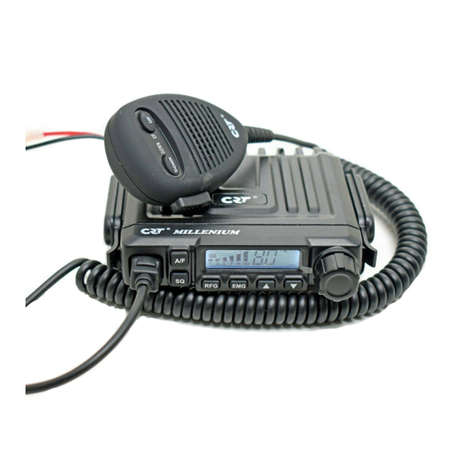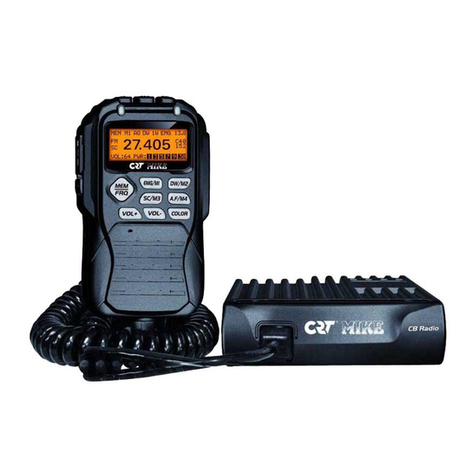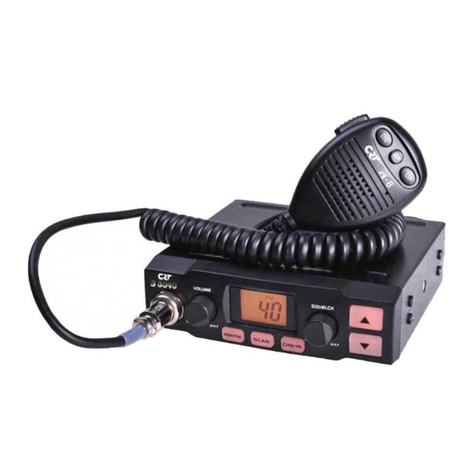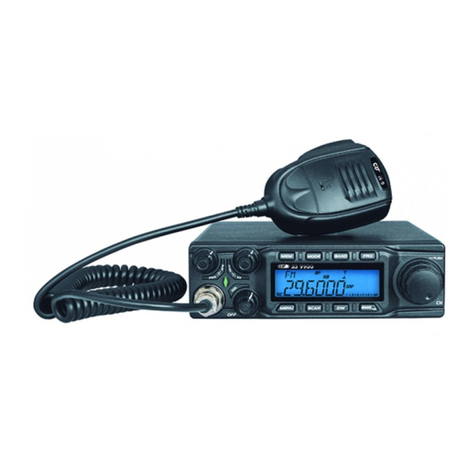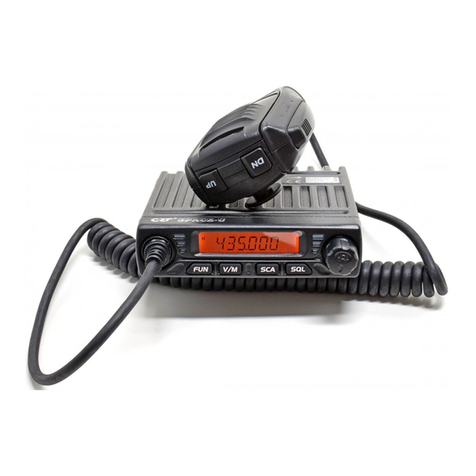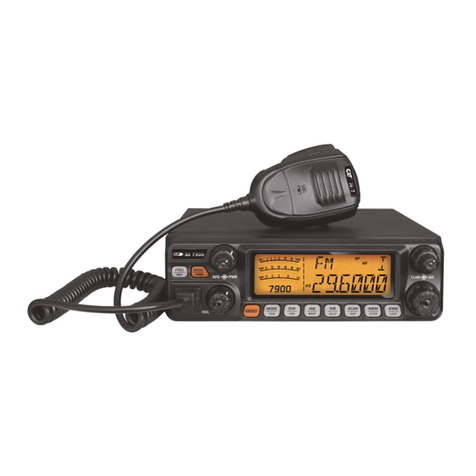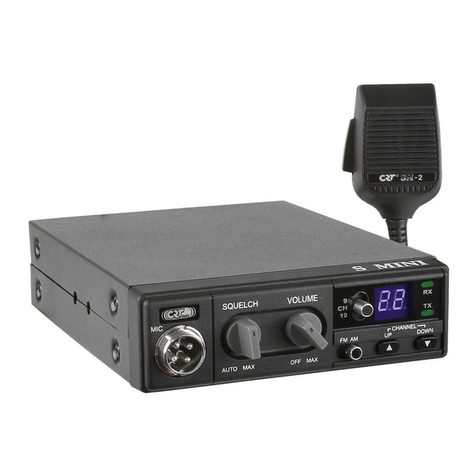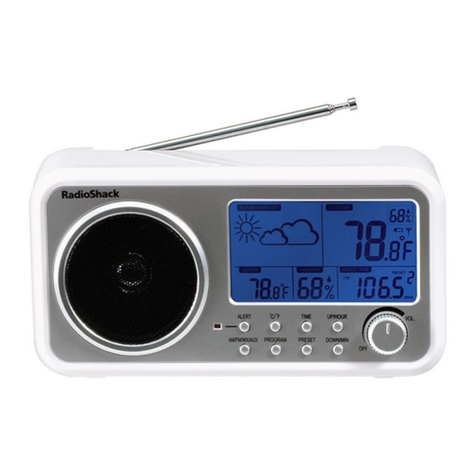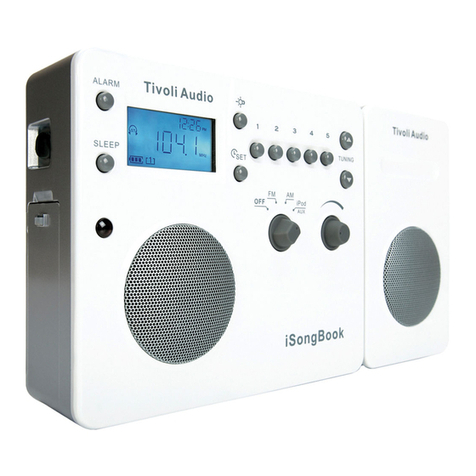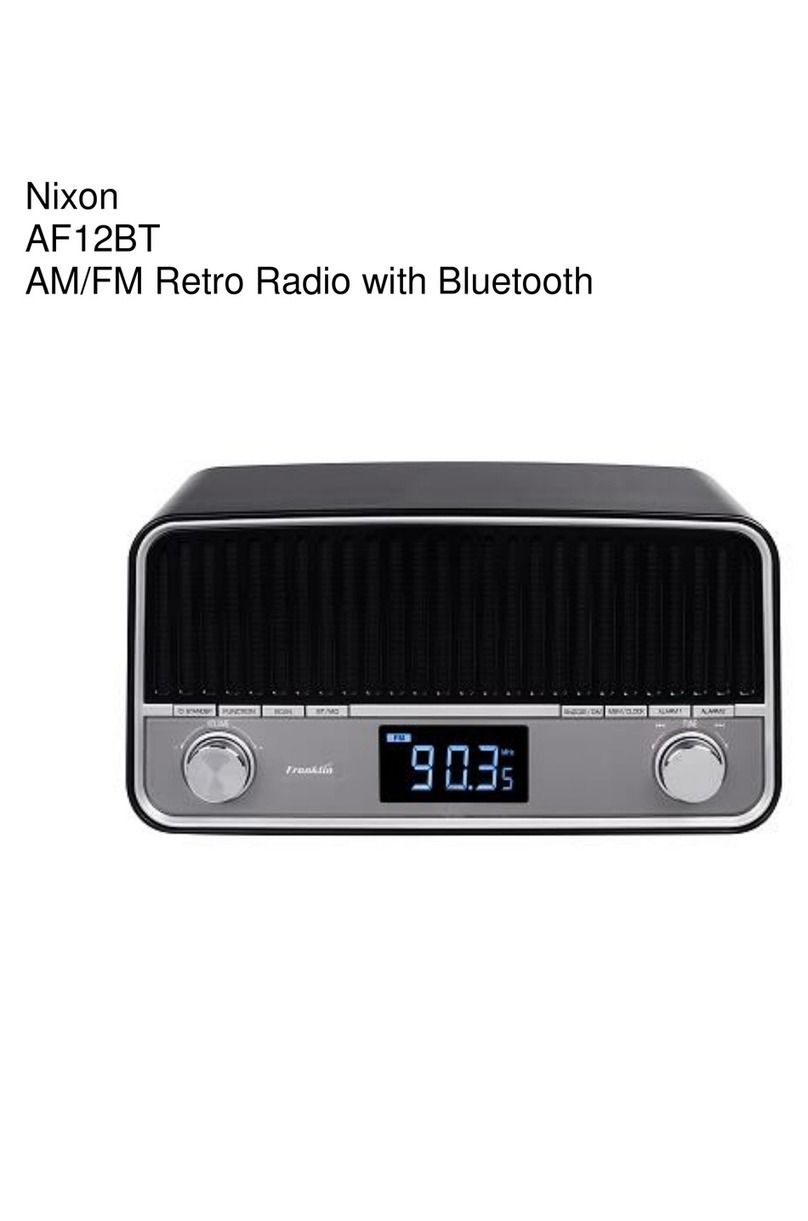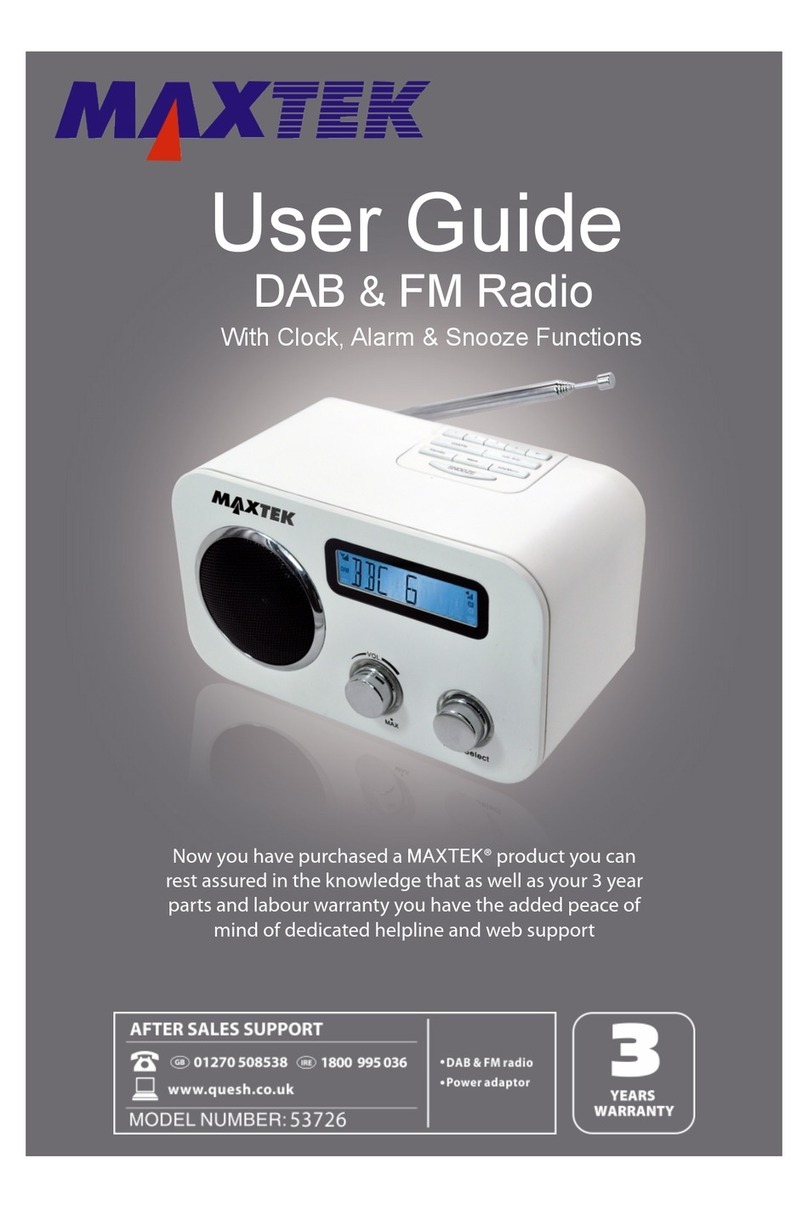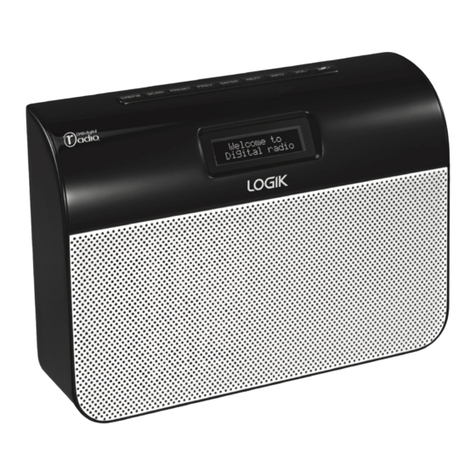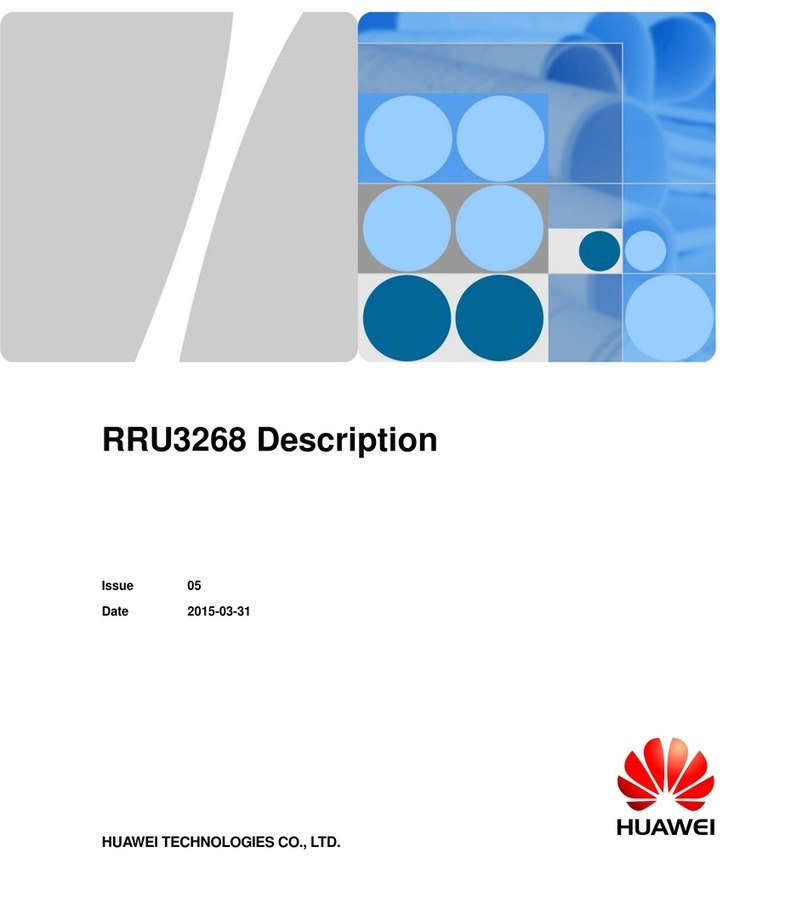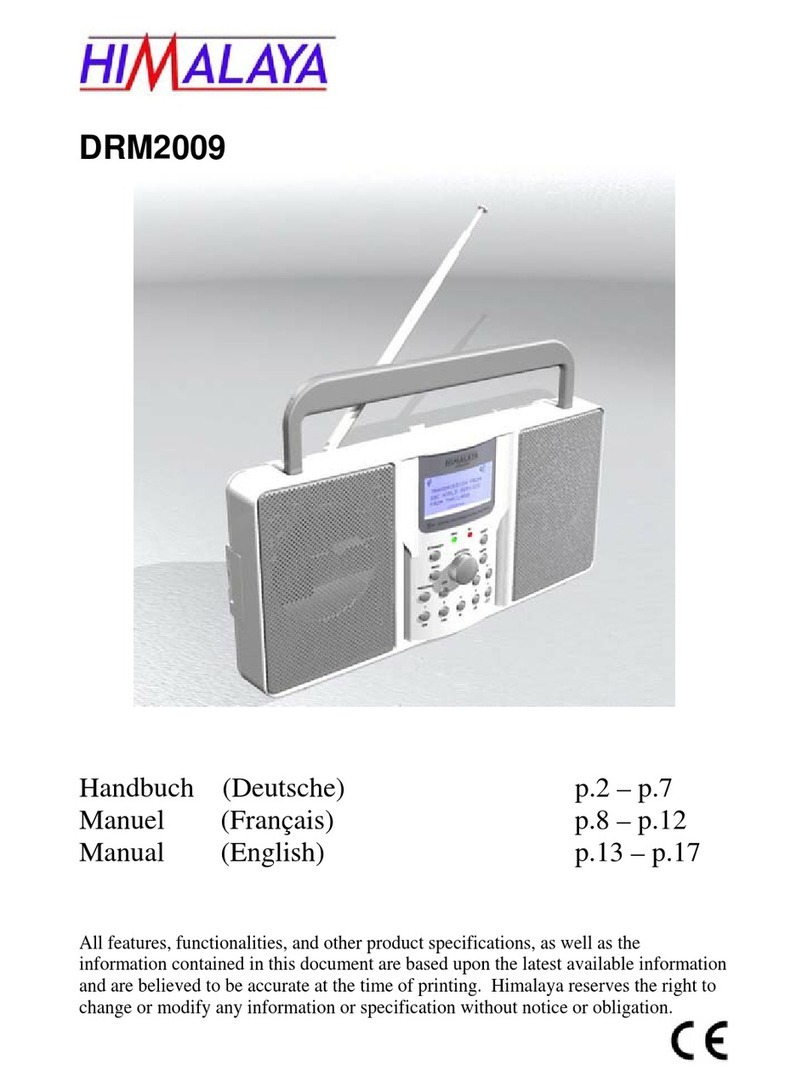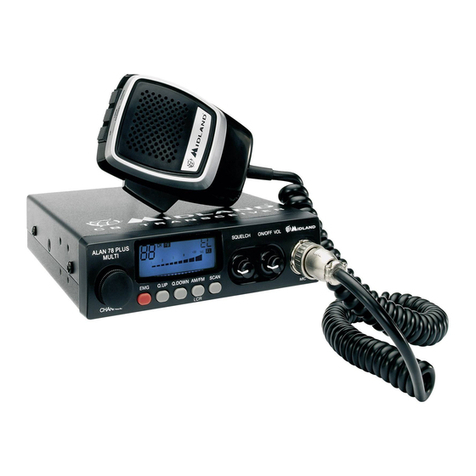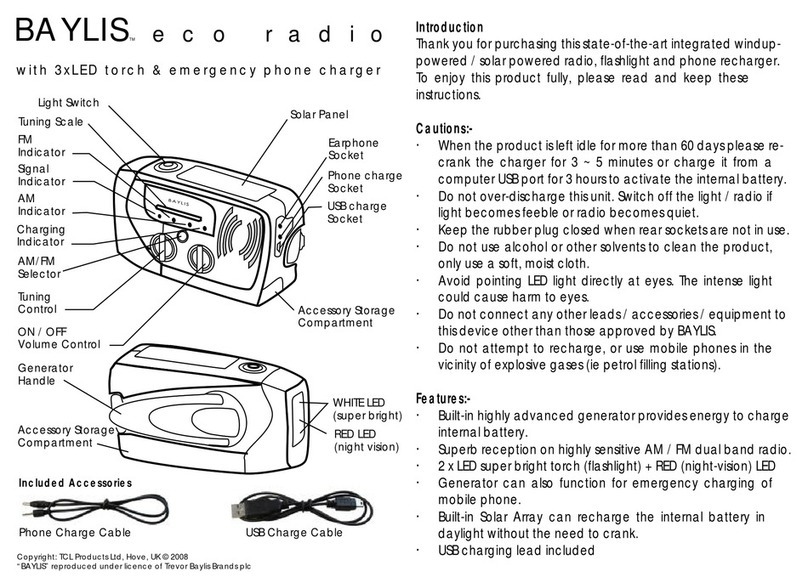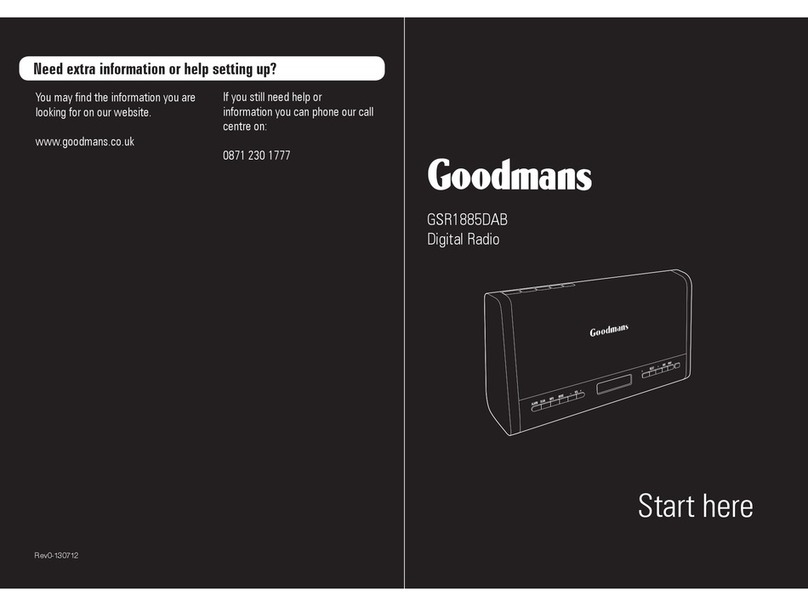CRT SS 6900V User manual

>
FUNC R.B.
(?,
(?,
BP
;
~
+10KHz
m
sc.usT
HI-CUT
@1J
VOL-:'>-SQ
1-~/
~~/
.
~
NBIANL
LOCK
SWR
-
TOT
®
✓-
USER'S
MANUAL
0
Q
% '
\
~
• i
;is
I
0,
ow
-
NB/ANL
LCD OFF
,,,,,,,,,,-,n
TXIRX
EMG - -
uu
-
L LI.LI
LI
U
:;1111111111
-
SIRF
USB
1•3•5•7•9•+30
RF
GAIN~RF
PWR
C D
AM
FM
CLARIFIER
~I
~I
B E
CW
USB '
A
~
/
PA.
/ \ LSB
/'
.~
•
___
,I ./ \
MODE
PUSH~
CE
M'
@)
a-OHII
RoHS
1<0
.....
10
ETER

SYMBOLS DESCRIPTION
PleaSe
carefUlly
read
the
instrudions
lnfonnation
on
recyclng,
not
throwing
your
material
In
the trash at the end
of
life,
Bring
it
tospecial aera
to
be recydlng
DC
using
Keep
dry
Shield symbol
CE confonnilysymbol
Warning
RESTRICTIONS
✓
,,,..A.
STORAGE , TRANSPO8T, USING
Storqe:
CMnel -JO/IS"
{°
H11111idily)
Trusport
:-JO/IS"{°
H11•itlity)
OJH!ru•blt
lalperillllre -JO Ii +S0°
Usi,,1 qcu
1X
10"1RX
'°"
---
.L
CE:
~
Ill

::::::iijjijiii;;;iiiiii.iiiii;;;iiiiiiiiii.iiiiiiiiiiiiiiiiiiiiiiiiiiiiiiiiiiiiiiiiiiiiiiiiiiiiiiiiiiiiiiiiiiiiiiiiiiiiiiiiiiiiiiiiiiiiiiiiiiiiiiiiiiiiiiiiiiiiiiiiiiiiiiiiiiiiiiii;;;;;_;;;;;;;;;;_;;;;;iiii,iiiiiiiiiiiiiiiiiiiiiiiiiiiiiiiiiiiiiiiiiiiiiiiiiiiiiiiiiiiiiiiiiiiiiiiiiiii-i-
[Il1
This transceiver corresponds to the requirements
of
European directive RED 2014/53/EU and answers
th
e
European standards of t6Iecommunication
EN
62368-1, EN 62311, EN
301
489-1/-15,
EN
301
783.
IMPORTANT: This receiving transmitter works
on
not free frequencies in the use.
The
user
has
to
posse~
a
radio license amateurradio (certificate
of
radio operatorHAM)to use it (in emission) and only
on
the
frequencies
authorized in radio amateurs 28.000-29.700 MHz.
IIJ
This model is approved for use in these countries : AT-BE-BG-CH-CY-CZ-DK-EE-ES-Fl-FR-DE-UK-EL
-HR-HU-IE-IS-IT-LI-LU-LT-LV-MT-NL-NO-PL-PT-RO-SK-51-SE and in
CEPT
countries
and
those
no
CEPT countries that implement the CEPT regulation
TR
61/01.
Thank you for choosing this CRT vehide transceiver CRT always provides high quality products.Though friendly
design for user, this transceiver is technically complicated and some features
may
be
new
to
you.
Consider
this
manual to
be
a
personal tutorial from the designers, allow the manual to guide you through
the
learning
process
now, then act as a reference in the coming years.
PRECAUTIONS
Please observe the following precautions to preventfire, personal injury,
or
transceiver
damage.
Do not attempt to configure your transceiver while driving,
it
is dangerous.
This transceiver is designed for a 13.BV DC power supply. Don't use a
24V
battery
to
power
on
the
transceiver.
Do not place the transceiver in excessively dusty, humid
or
wet
areas,
nor
unstable surfaces.
Do not connect the antenna while transmission, risk
of
bum
or
electric shock.
Please keep
it
away from interferential devices (such
as
lV,
generator etc.)
devices
(such
as
1V,
generator
etc.)

[DJ
----------~~--=-=-.iiiiiiiiiiiiiiiiiiiiiiiiiiiiiiiiiiiiiiiiiiiiiiiiiiiiiiiiiiiiiiiiiiiiiiiiiiiii.iiiiiiiiii:i-----------------==
~
~
&
&
&
&
&
&
For
those fitted with pacemakers are advised
to
move awayfrom the antenna during transmission, mainly I h
power, and especially do not touch it. n
lgh
Never
allow metal objects
or
son electrical contact with the part or internal electrical connection
to
the
rl
k
electric shock. s
of
Avoid exposing the transceiver to temperatures below-30 °C. and above +60 ° C, the temperature of
the
da
h
board inside a vehicle can sometimes exceed 80 °C, which can damage irreparable damage to your machin!.•
case
of
prolonged exposure. Not exposed to prolonged direct sunlight or place
it
near heaters.
'"
Do
not
place anything on top
of
the apparatus that would interfere with cooling
Check
that
your
battery is sufficiently charged to avoid rapidly exhausting its resources.
It is important
to
tum offyourdevice before starting the vehicle to avoid damage caused byspikes in the
ignition.
When
replacing the fuse, you must use a fuse 15A250V type F
In
no
case a highervaluel, Otherwise a fire hazard.
If
an
abnonnal
odor
or
smoke is detected coming from the transceiver, tum OFF the power immediately.
Contact
an
CRT
service station
or
your dealer.
Do
not
transmitwith high output power for extended periods; the transceiver may overheat.
&
Keep
out
from children.
Attention:
•
Before
using
your
transceiver please connect an antenna on the connector PL on back side then check
the
SWR
before emitting. A too important SWR can entail the destruction
of
the transistors
of
power which
are
not
flatware
by
the guarantee
cc~W)--------------------------------

---------------
===-;:iiiiiiiiiiiiiiiiiiiiiiiiiiiiiiiiiiiiiiiiiiiiiiiiiiiiiiiiiiiiiiiiiiiiiiiiiiiiiiiiiiiiiiiiiiiiiiiiiiiiiiiiiiiiiiiiiiiiiiiiiiiiiiiiiiiiiiiiiiiiiiiiiiiiiiiiiiiiiiiiiii;;;;;;;;_;:;;;;;;;;;;;;.;;:;;;;;;;;;;;.;;:;;;;;;;;;;;.;;:;;;;;;;;;;;.;;:;;;;:iiiiiiiiiiiii;;;;;;;;.;;:;;;;;;;;;;;.;;:;;;-=-
cm
Welcome to the world of new radios. The new SS 6900V Radio provides you with top
performance
and
best
visual
enjoyment. With the use of SMT technology to guarantee the best stability, reliability and unprecedented quality,
your
multi-functional SS 6900V Radio 10-meterRadio is a new step in personal communication and is surely the
best
choice
for
professional users of radios. Moreover, with multiple connecting ports in the radio. SS
6900V
Radio
is
ready
for
future
upgrading and functions expanding.
To
ensure that you use the radio to the fullest, please read this
manual
carefully
before installing and using your
SS
6900V Radio.

CONTENTS
FUNCTIONS
&FEATURES
•.•.••••••••...••..••.•.•..••..••..............••....•...•••......•••...••.........••••.•.••.•.•...•...•.•...•.•.••.•.•••..••..•....••.••••.......••••.••••••..
1
WARNING ..........................................................................................................................................................................................
1
RESET FUNCTION (Resume Factory Default) ...............................................................................................................................1
INSTALLATION..................................................................................................................................................................................2
HOWTO USE YOUR RADIO
..•••.•••••••.•..••.•.••.••.••••••....•••..••.......•.............•.•...•..........••••.•...•.....•...•...••..•..•..•••••.•...••••••.•••..•••....•..•...•...
4
FUNCTION MENU SETUP
••.•••.•••..•.••••••.•..•••••••.•.•.•••••••.•...•••.••••••.•......•.•..•.•...•..•••......•...•..••..•..•..••••.••.•.•.......•••••...•••••...••••.••••••...•.•...
9
OPERATING PROCEDURE TO RECEIVE........................................................................................................................................
11
.OPERATING PROCEDURE TO TRANSMIT
•.••••••••.••.••.•..•••.•..••••....•.••.........•..•.•••..••.••••.••.••.••••••••••..•••.••••.••••.•••••••••••••••••••••••••...••••.••
11
CTCSS-OCS cooes
.......................................................................................................................................................................
12
SPECIFICATIONS
••••••••••••.••••••.•••••••••.•.••.••••••.••••••••••••••..••••..•..•.•..••.•.•.....••••••......••••••••..••..•••••...•.••••.•••.•.•.•...••.•...•.•.•..••••.••••••••...•.•..•.•
12
PROGRAMMING
BY
COMPUTER (OPTION)
••••••.••••••••••.•••••••••.••••....•..••••••••••••.•.••..•••.•••••..•.•.••••••...•.•••••.•••.••••••••••••.•••••••.•••••••.
13
\
\
\
(tl:~T4l)--------------------------------

·---------------
::iiiiiii-iiii-___.;..iiiiiiiiiii
iiii.iiiiiiiiiiiiiiiiiiiiiiiiiiiiiiiiiiiiiiiiii:iiiiiiiiiiiiiiiiiiiiiiiiiiiii:iiiiiiiiiiii-----~~---------
-----iiiiiiii-iii-iiiiiiiii-iii-iiiiiii-iiii-i.iiii- mi
■
FUNCTIONS
r,
FEATURES
\
\
\
\
,.
Big
LCD
which
displays
frequency
and
all
kinds
of
Information
2.
DUAL-DIGITAL
TUBE
FOR
CHANNEL
DISPLAY
J.
USE
EL
technology
for
backllght
4,
PA,
CW,
AM.
FM.
USB.
LSB
mode
s.
A, B, C, D. E, F ,
6
bands
In
total,
with
60
channels
at
most
in
each
band
to
be
programmed
.
6.
Frequency
Tuning
Step
can
be
1
0HZ,
1
OOHZ,
1
KHZ
or
1
0KHZ.
7,
Multiple
CLARIFIER
Operating
Modes
B.
Flexible
menu
functions
and
PC
programming
software
to
meet
varied
customer
demands
9.
ECHO
Fundlon
JO.
SQ,
ASQ
Function
(FM
and
AM
mode
only)
l
1.
RF
GAIN
ADJUSTMENT
12.
RF
POWER
AM/FM/SSB
ADJUSTMENT
13.
SCAN
FUNCTION
14.RB
FUNCTION
15.
NB/ANL
FUNCTION
16.DW
DUAL-WATCH
FUNCTION
17.
BEEP
VOICE
PROMPT
18.+10KHZ
Function
19.SWR,
S/RF,
DC
Voltage
display
function
20.
TOT
function
21.
HI-CUT
FUNCTION
22.EMG
CALL
23.
SWR
PROTECTION
24.
POWER
SUPPLIED
VOLTAGE
PROTACTION
25.
Key-lock
Function
26
.
VOX
function
(in
vox
function,
the
squelch
must
atways
be
engaged)
27
.
CTCSS/DCS
code
28.
RX
compander
29
.
Noise
gate
setting
30
.
RX
Noise
Reduction
(optional)
31
.
Mic
type
selection
■
WARNING
To
use
the
radio.
please
connect
the
antenna
to
the
location
•e·
on
the
back
panel
of
the
equipment firstly
and
then
set
the
SWR
(Standing
Wave
Ratio) before transmitting. Failure
to
do
so
may result
In
destruction
of
the
power
amplifier.
which
is
not
covered by
the
guarantee.
■
RESET FUNCTION
(RaurM
Factory
Dsfault)
This Radio Introduces RESET FUNCTION to prevent accidents
and
provide a solution
for
customers
who
changed
some
functions
unconsciously
and
do
not
know
how
to
resume normal settings. The
Radio
will
resume
factory
default
once
this
function
Is
activated.
How
to Operata:
Step
1:
Power
off
the
radk>
.
Step
2:
Press
and
hold
FUNC
and
SCAN
keys
at
the same
time,
followed
by
powering
on
the
radk>
.
Step3:
Release
the
two
keys
when
LCD
displays
·Res·.
All
former
settings
would
be
replaced
by
Factory
Default
value
when
LCD
displays
•RENO•
.
WARNING:
All
former
settings
would
be
replaced
by
Factory Default
value
after
operating
the
RESET
FUNCTION.
I
GJ
I

I
0
I
-
CE] iiiiiiiiiiiiiiiiiiiiiiiiiiiiiiiiiiiiiiiiiiiiiiiiiiiiiiiiiiiiiiiiiiiiiiiiiiiiiiiiiiiiiiiiiiiiiiiiiiiiiiiiiiiiiiiiiiiiiiiiiiiiiiiiiiiiiiiiiiiiiiiiiiiiiiiiiiiiiiiiiiiiiiiiiiiiiiiiiiiiiiiiiiiiiiiiiiiiiiiiiiiiiiiiiii.iiiiiiiiii.iiiiiiiiiiiiiiiiii.iiiiiiiiii.iiiiiiiiiiiiiiiiiiiiiiiiiiiiiiiiiiii-i.iiiiiiiiiii.ii.iiiiiiiiiiiiiiiii;iiiiii:::
■
INSTALLLATON
I.
WHERE
AND
HOW
TO
MOUNT
YOUR
MOBILE RADIO
a)You should choose the most appropriate setting from a simple and
practical point
of
view.
b)Your
radio should not interfere with the driver
or
the passengers.
c) Remember to provide different wires for passing and protection.
(e.g.: power, antenna, accessory cabling) so that they do not
in
any
way
Interfere with the driving
of
vehicles.
d)To Install your equipment, use the cradle (1) and the self-tapping
screws
[2]
provided
(drilling
diameter
5 mm). Take care not to
damage
the
vehicle's
electrical
system while drilling the dash
board.
e)Do
not
forget to insert the rubber joints [3] between the TX and
its support as these have a shock-absorbing effect which permits
gentle orientation and tightening
of
the set.
f)Choose where to place the microphone support and remember that
the microphone cord must stretch to the driver without interfering
with the controls
of
the vehicie.
2. ANTENNA INSTALLATION
a) Choosing
your
antenna:
For radios, the longer the antenna, the
better
Its results. Your
dealerwill help
you
with your choice
of
antenna.b) Antena
Movel.
b) Mobile antenna:
-Must
be
fixed to the vehicle where there is a maximum of metallic
surface(ground plane), away from windscreen mountings.
-There are two types
of
antenna: Pre-Regulated Antenna
which
should
be
used on a good ground plane
(e.g.
car roof or lid of
the
boot), and Adjustable Antenna which offer a much larger frequency
range and can be used on a smaller ground plane.
For an antenna which must be fixed
by
drilling, you will need a
good contact between the antenna and the ground plane.
To
obtain
this, you should lightly scratch the surface where the screw
and
tightening star are to be placed.
-Be careful not to pinch or flatten the coaxial cable (as this runs
the
risk
of
break down and/or short circuiting).
-Connect the antenna to location (8).
c)
Fixed
antenna:
A fixed antenna should be installed
In
a space as clear as possible.
If
it
is fixed to a mast,
it
will
perhaps
be
necessary
to stay it,
according
to
the
laws
in
force
(you
should
seek
professional
advice). All SS 6900N antennas and accessories are designed
to
give maximum efficiency to each radio within the range.
(((Cl-)-
-
--------------------------------
•
\

1
iiiiiiiiiiiii-i~iiiiiiiiiiiiiiiiiiiiiiiiiiiiiiiiiiiiiiiiiiiiiiiiiiiiiiiiiiiiiiiiiiiiiiiiiiiiiiiiiiiiiiiiiiiiiiiiiiiiiiiiiiiiiiiiiiiiiiiiiiiiiiiiiiiiiiiiiiiiiiiiiiiiiiiiiiiiiiiiiiiiiiiiiiiiiiiiiiiiiiiiiiiiiiiiiiiiiiiiiiiiiiiiiiiiiiiiiiiiiiiiiiiiiiiiiiiiiiiiiiiiiiiiiiii-- [II]
J.
POWER
CONNECTION
Your
RADIO
Is
protected against
an
inversion
of polarities.
However,
before
switching it
on,
you
are
advised
to
check
all
the
connections
.
Your
equipment must
be
supplied with a continued current of
12
volts
(A).
Today,
most
cars
and
lorries
are
negative earth.
You
can
check
this
by
making
sure
that
the
negative
terminal
of
the
battery
is
connected
either
to
the
engine
block or
to
the
chassis
. If
this
is
not
the
case,
you
should
consult
your
dealer.
WARNING:
Lorries generally
have
two
batteries
to
supply
a voltage
of
24
volts,
In
which
case
it will
be
necessary
to
insert a
24/12
volt
converter into the electrical circuit.
The
following connection steps
should
be
carried
out
with
the
power
cable
disconnected
from
the
set.
a)Check
whether
the
battery
Is
of
12
volts
.
b
)Locate
the
positive
and
negative
terminals
of
the
battery
(+
is
red
and
-
is
black).
Should
it
be
necessary
to
lengthen
the
power
cable,
please
use
the
same
or
a
superior
type
of
cable
.
c)lt
is
necessary
to
connect
your
TX
to
apermanent(+) and(-).
We
advise
you
to
connect
the
power
cable
directly
to
the
battery
(as
the
connection of
the
TX
cable
to
the
wiring
of
the
car-radio
or
other
parts
of
the
electrical circuit
may,
in
some
cases
,
increase
the
possibilities of interference).
d)Connect
the
red
wire
(+)
to
the
positive
terminal
of
the
battery
and
the
black
(-)
wire
to
the
negative
terminal
of
the
battery.
e)Connect
the
power
cable
to
your
radio.
WARNING:
Never
replace
the
original
fuse
(15A)
by
one
of
a different
value.
Towards
starter
Connected
to
chassis
4.
BASIC
OPERATIONS
TO
BE
CARRIED
OUT
BEFORE USING
YOUR
SET
FOR
THE
FIRST
TIME (without transmitting or using
the
<<Push-
To-
Talk>>
switch
on
the
microphone)
a)
Connect
the
miaophone
b)
Check
the
antenna
coonections
c)
Tum
the set
on
by
turning the volume knob clockwise
d)
Tum
the
squelch knob
to
minimum
e)
Adjust
the
votume
to
e1
comfoilable level
f)
Go
to
channel
20
D band
by
usmg
either
the
UP
or
ON
key
on
the
microphone or
the
rotary knob.
5.
ADJUSTMENT OF SWR(1tandlng
wave
ratio)
WARNING:
This must be carried out when you use your radio
for
the
first ti
me
{and
whenever
you
re-position your antenna}. The
adjustment
must
be
carried
out in
an
obstacle-free
area
.
Adjustment
with
a built-In
SWR
meter or external
SWR
meter
a)
To
connect the
SWR
meter
Connect
the
SWR
meter between
the
radio
and
the antenna
as
close
as
possible
to
the
radio
(use a maximum of 40cm cable).
b)
To
adjust
the
SWR
meter
-Set
the
TX
to
channel
20
D
band
In
FM
.
-put
the
switch
on
the
SWR
meter
to
position
CAL
or
FWD.
-Press the <<Push-To-Talk>> switch
on
the microphone to
transmit
-Bring
the
index
needle
to
'Y
by
us
i
ng
the
calibration key.
-
Change
the
switch
to
position
SWR
{reading of
the
SWR
level).
The
read
i
ng
on
the
meter should
be
as
near
as
possible
to
1. If
this
is
not
the
case,
re-adjust your antenna
to
obtain a reading
as
ctose
as
possible
to
1.(
An
SWR
reading between 1
and
1.8
is
acceptable).
-It will
be
necessary
to
re-calibrate the
SWR
meter after each
adjustment of
the
antenna.
I
0
I

I
0
I
CT!]
iiiiiiiiiiiiiiiiiiiiiiiiiiiiiiiiiiiiiiiiiiiiiiiiiiiiiiiiiiiiiiiiiiiiiiiiiiiiiiiiiiiiiiiiiiiiiiiiiiiiiiiiiiiiiiiiiiiiiiiiiiiiiiiiiiiiiiiiiiiiiiiiiiiiiiiiiiiiiiiiiiiiiiiiiiiiiiiiiiiiiiiiiiiiiiiiiiiiiiiiiiiiiiiiiiiiiiiiiiiiiiiiiiiiiiiiiiiiiiiiiiiiiiiiiiiiiiiiiiiiiiiiiiiiiiiiiiiiiiiii.ii---.:::::
6.
HOW TO USE INTERNAL SWR METER
-Set TX to channel 20 D band in FM.
-Press <<push-to-talk>> button
on
the microphone to transmit.
-At the moment, LCD would display SWR value which should be
as close as possible to
1.
If this is not the
case,
re-adjust your
antenna t~ obtain a SWR value as close as possible to 1 (an
SWR read
mg
between 1 and 1.8 is acceptable).
■
HOW
TO
use
YOUR RADIO
<LCD Display>
~
AG
III
NI/ML •
vox
ICIIO
NG
NC
11c
DW
1al
ilSSBBB.Hi1l
L
IC
TIQ
PA
cw
All
FIi
1111
LIB
-
lt
010107010~
7 digits: Display frequency and any other information.
Indicating bars:
Indicate RX, RSSI,
PA,
PWR, SWR.
The first decimal point:
Appears when current channel is edited with
SCAN
DEL.
~
:Appears after pressing FUNC
key.
AQ:Appears
when ASQ function is started (only forAM/FM).
RB:Appears
when Roger beep function is started (enabled).
NB/ANL:
Appears when NB/ANLfunction is started (enabled).
BP:Appears
when BP function is started (enabled).
ECHO:
Appears when ECHO function is started (enabled).
VOX:
Appears when VOX function is started.
NG: Appears when
TX
noise gate is started.
NC: Appears when RX noise compander is started.
HI-CUT:Appears when
HI-CUT
function is started.
DW: Appears when
OW
function is started.
10K:
Appears when +10KHZ function is started.
EMG:
Appears when EMG channel is used.
SWR:
Appears when SWR is used.
SRF:
Appears when S/RF is used.
SC: Appears when SCAN is used.
TSQ:
Appears when CTCSS/DCS code is used.
NR:
Appears when RX noise reduction is tum on.
PA.
cw.
AM.
FM.
USB.
LSB:
Indicate different
operating
modes.
J.
Appears when CLARIFIER function is FINE operation.
2.
Appears
when CLARIFIER FUNCTION is COARSE
operation
or
RT operation.
3,
Appears when CLARIFIER FUNCTION is transmitting
frequency
regulated.
I
-·~
·-~--:'
'·.::~
·
·-::.
~
0-
I
=~•
~•
....,
-
......
'--Y
·
e:i.
I
<FRONT PANEL>
1.
OFF/ONNOLUME(lnner
Dual Concentric)
• I
~
Tum clockwise
to
switch on the radio and set desired
volume
level.
Under normal operating state, the VOLUME control
is
used
to
adjust
the output volume obtained either by the transceiver
speaker
or
the
external speaker
or
the external PA speaker,
if
used.
2.
SQUELCH
(Outer Dual Concentric)
This control is used to cut off
or
eliminate receiver
background
noise
in
the absence
of
an incoming signal. For maximum
receiver
sensitMtY,
(((C~-)-------------------------------

==-iiiiiiiiiiiiiiiiiiiiiiiiiiiiiiiiiiiiiiiiiiiiiiiiiiiiiiiiiiiiiiiiiiiiiiiiiiiiiiiiiiiiiiiiiiiiiiiiiiiiiiiiiiiiiiiiiiiiiiiiiiiiiiiiiiiiiiiiiiiiiiiiiiiiiiiiiiiiiiiiiiiiiiiiiiiiiiiiiiiiiiiiiiiiiiiiiiiiiiiiiiiiiiiiiiiiiiiiiiiiiiiiiiiiiiiiiiiiiiiiiiiiiiiiiiiiiiiiiiiiiiiiiiiiii~[R]
It
la
desired that the control be adjusted only to the point where the
receiver background noise or ambient background noise is eliminated.
Tum fully anticlockwise then slowly clockwise until the receiver noise
dlsappeara. Any signal
to
be received must now
be
slightly stronger
than the
average
received noise. Further clockwise rotation will
Increase the threshold level which a signal must overcome
in
order
to
be heard. Only strong signals will
be
heard at a maximum clockwise
setting.
J. ECHO(lnner
Dual
Concentric)
This switch is used
to
control echo
effect.
4.
TONE
(Outer
Dual
Concentric)
This switch is used
to
control intervals of echo sound
s.
RG
GAIN
( Inner
Dual
Concentric)
This switch is for adjusting sensitivity during reception. For long
distance communications
RF
GAIN
should
be
set to maximum.
RF
GAIN can
be
reduced to avoid distortion, when your correspondent is
close by and when he does not have
RF
POWER.
The
normal setting
ofthis function is
on
maximum (fully clockwise).
6.
RF
POWER
(Outer Dual Concentric)
Adjustment ofthe output power is for
AM
and
FM
mode
only.
Reducing
the power is allowed when communicating with a person who has
no
RF
GAIN. The normal position of this function is set
to
maximum,
fully
clockwise.
7.
BAND
SELECTOR
Rotate this switch to select
A,
B,
C,
D,
E,
F
band
of operation
8.
MODE(PA/CW/AM/FMIUSB/LSB)
This switch allows selecting the modulation
mode
PA,
CW,
AM,
FM,
LSB
or USB. Your modulation mode has
to
correspond with
the
one
of your correspondent. The mode selector changes the mode of
operation ofboth transmitter and receiver simultaneously.
Frequency Modulation/FM: for nearby communications
on
a flat
open field.
Amplitude
Modulation/AM:
Communication
on
a
field
with reltef
and
obstacles
in
middle distance
(the
most
used).
Upper
and
Lower Side Band/USB-LSB: Used for long distance
communications (according to
the
propagation
COflditiol',s)
.
9.
CLARIFIER
This is frequency tuning knob which
can
be set
as
different modes
(refer to
CLA
Specifications in Functions
Menu
for
more
details).
IO.PUSH
This is
PUSH
Key
which
can
be
set
as different modes (refer
to
PSH
specifications under Functions
Menu
for
more
details).
I
I.
CHANNEL
SELECTOR
Rotate this switch to select
any
d8S(fed channel from forty citizens
band channels.
The
selected channel appears
on
the
LED directly
above the channel sefector knob.
12.
CHANNEL
INDICATOR
Numbered
LED
indicates
the
selected
channef to operate
on
.
JJ.
RECEIVER/TRANSMIT
INDICATOR
When
it
is
receiving, the
LED
will
be green.
The
LED
will
be red
when
it is transmitting.
/4.
LCD
DISPLAY
Display
frequency,
all kinds of information
and
icons.
15.FUNC
This
is
functional key. Press
and
hold
thas
key
for 2seconds
to
enter
into Functions Menu Setup (refer
to
Functions
Menu
for
more
details).
Press FUNC key and other individual key
to
realize the second
functions silk-screened under
the
button.
For
example,
press
FUNC
key
followed
by
pressing
RB
key
to
realiZe
the
BP
function. Press
FUNC
key
followed
by
OW
to realize the
LCD
OFF
function
.
Details operations
are
as
bellows:
Press
FUNC
key,
·FuNc·
icon
will appear
on
LCD
display.
Release
I
0
I

I
®
I
[TI]
iiiiiiiiiiiiiiiiiiiiiiiiiiiiiiiiiiiiiiiiiiiiiiiiiiiiiiiiiiiiiiiiiiiiiiiiiiiiiiiiiiiiiiiiiiiiiiiiiiiiiiiiiiiiiiiiiiiiiiiiiiiiiiiiiiiiiiiiiiiiiiiiiiiiiiiiiiiiiiiiiiiiiiiiiiiiiiiiiiiiiiiiiiiiii.--..--.iiiiiiiiiiiiiiiiiiiiiiiiiiiiiiiiiiiiiiiiiiiiiiiiiiiiiiiiiiiiiiiiiiiiiiiiiiiiiiiiiiiiiiiiiiiiiiiiii.iiiiiiiii;;;;;;;;;;;
FUNC key, and then press other keys to realize the second functions
sllk-saeened under the button. •FUNC+ Keypad name" is to be used
in the following operating Instruction.
16. ROGER BEEP OR BEEP FUNCTION
Cl)RB
Press "RB" key to enable "ROGER BEEP" function with "RB" icon
appearing on LCD display. Press the key repeatedly
to
switch on/off
the function.
When RB function is enabled, the radio will automatically transmit the
audio signal
at
the end
of
your transmission. The listener can note
easily
that your transmission Is over through the signal.
(2)FUNC+RB
Press FUNC+RB to realize BP Function. It
Is
a
prompting function
with
"BP" icon appearing on LCD display. Speaker would emit a BEEP for
prompting when press any key. press FUNC+RB repeatedly to switch
on/offthe function.
17.
NB/ANL
or
LOCK
(1)
Press NB/ANL key to enable NB/ANL function with "NB/ANL" icon
appearing on the LCD display. Press the key repeatedly to switch on/
off
the function.
Noise Blanker/Automatic Noise Limiter. These filters allow reducing
back ground noises and some reception interferences.
(2)
FUNC+NB/ANL
Press FUNC+NB/ANL to realize the Keyboard Lock function. When
this
function
is
enabled,
all
keys
are invalid
except
PTT, BAND
SWITCH, and MODE SWITCH. When pressing any key except
PTT,
BAND SWITCH, MODE SWITCH, the LOCK icon will display on the
LCD.
These
situations indicate that the keyboard has been locked.
Press FUNC+NB/ANLrepeatedly to switch on/offthe function.
18.
OW
or
LCD
OFF
(1)
The
OW
(dual
watch)
function
allows
automatic
alternate
monitoring
of
two
channels
.
Refer
to
the following procedures
to
enable this function.
To
enable
the
OW
function, firstly turn the SQ control clockwise
until the background noise
Is
cut out. Select the first channel
to
be
monitored by using the CHANNEL SELECTOR knob or the channel
selector
keys
on
the microphone. Press the
OW
key and the
OW
Icon
will flash on the LCD display. Secondly, follow the above procedures
to select second channel
to
be monitored. Finally, press the
OW
key
again and the two monitoring channels will be alternately Indicated
on
the LCD. Radio will automatically start monitoring (scanning) the
two
channels. When a signal is detected on one of the channels, scanning
stops and it
Is
possible
to
listen the communications on that channel.
Press PTT to transmit on this channel.
If
there Is no transmission
or
detected signal on that channel within
5
seconds(time to resume
scanning can be programmed by PC software), radio will resume
scanning. When the
OW
function Is enabled, the
OW
icon appears
on
the LCD.
To
exit the
OW
function, press the
OW
key or the PTT
key.
The
scan Type
above
is the SQ
mode
under
SCA
Selection in
Function Menu. IfTl mode is selected and valid signal
Is
detected,
the
radio would still start scanning when it is time to resume scanning,
whether there is signal or not in current channel.
(2)FUNC+DW
When this function is
enabled,
LCD
display
would
be switched
OFF(LCD OFF).
Repeat this operation
to
switch ON/ OFF the function.
19.
SCAN OR Scan.list
(l)SCAN
Automatic Scanning
of
busy channels.
Press the SCAN key to enable the SCAN function. Before enabling
the
SCAN function, firstly tum the SQ control clockwise till the background
noise is cut out. Then press the SCAN key, radio will automatically
scan all channels continuously in the scan list and the SC Icon
will
appear on the LCD.
When a signal is detected on a channel, scanning stops on this
ccrc:ia>)-----------------------------------
'
l

l,
I
;iiiiiiiiiiiiiiiiiiiiiiiiiiiiiiiiiiiiiiiiiiiiiiiiiiiiiiiiiiiiiiiiiiiiiiiiiiiiiiiiiiiiiiiiiiiiiiiiiiiiiiiiiiiiiiiiiiiiiiiiiiiiiiiiiiiiiiiiiiiiiiiiiiiiiiiiiiiiiiiiiiiiiiiiiiiiiiiiiiiiiiiiiiiiiiiiiiiiiiiiiiiiiiiiiiiiiiiiiiiiiiiiiiiiiiiiiiiiiiiiiiiiiiiiiiiiiiiiiiiiiiiiiiiiiiiiiiiiiiiiiiiiiiiiiiiiiiiiiiiiiiiiiiiiiiiii.iiiiiiiii
ffiJ
channel. You
can
receive
the calling, and also, can transmit on this
channel
by
pressing
PTT
key.
If
there
Is
no
transmission
or
detected
signal
on that channel within 5 seconds(Ume
to
resume scanning can
be
programmed
by
PC
software),
radio
will
start
scanning
again.
To
exit
the
SCAN
function,
press
the
SCAN
key
or
the
PTT
key.
The
Scan
Type
above
Is
the
SQ
mode
under
SCA
Selection
in
FuncUon Menu.
If
Tl
mode
Is
selected and valid signal is detected, the
radio would still start scanning when It Is
Ume
to resume scanning,
whether there Is signal
or
not
In current channel.
(2) FUNC+SCAN
SC.LIST (Scan
ADD
or
Delete). Press FUNC+SCAN
to
delete current
channel from
scan
list.
The
first
digit
on LCD would display. When
Scan function Is enabled, the radio would skip the deleted channel.
Repeat this operation
to
Add
or
Delete channels from scan list.
20.
+1
OKHZ
or
HI-CUT
(1) +1
0KHZ
Press this key to shift frequency up by 10khz.
When pressing this key, 1
0KHZ
would appear on LCD and frequency
of
channels Is shifted
up
by
10
KHZ. Repeat this operation to switch
ON/OFF this function.
(2) FUNC+
+10KHZ
Press
FUNC+10KHZ
to
realize
HI-CUT function. Once this function is
enabled, the radio would cut
out
high frequency Interference. Its use
depends on reception conditions.
When this function is enabled, •HI-CUT" would appear on LCD. Repeat
this operation to switch ON/OFF the function
21. SWR OR
TOT
COSWR
When pressing this key,
·swR·
Icon would appear on the LCD. When
transmitting,
SRF
bars
indicate
SWR
value
other
than PA
or
PWR
value.
One
bar
displaying
on
the
LCD Indicates that
SWR
value is
1.0. Each additional
bar
indicates every
0.1
added value. Repeat this
operation to switch ON/OFF the function.
(2) FUNC+ SWR
When pressing this key,
TOT
ON
or
TOT
OFF would display on the
LCD
for
2 seconds.
Repeat
this
operaUon
to
switch
ON/OFF
the
function.
When
ON
appears
on
the
LCD,
users
can
press
PTT
to
transmit. Then, the radio would time the transmitting duration.
Once
the duration is beyond the
set
TOT
time (programmable). the
radio
would emit voice prompt and stop transmitting
and
back
to
receiving
state automatically.
This
function
aims
to
protect
the
radio
against
powertube damage from superheating caused
by
long transmission.
22.
EMG
OR
SIRF
(1) EMG realizes Emergency Channel Call.
When
emergent
situation
happens, the radio
would
switch
to
the
channel
set
in
advance
to
communicate immediately. Then the "EMG" icon would display
on
the
LCD . Press
EMG
key
again to return to previous channel.
(2) FUNC + S/RF . . . I
S/RF
is
the switch
of
TX's
or
RX's
SIRS
1nd1cating bar.
When
this 0
function ts enabled. "SRF'icon would display on the LCD. Repeat the 7
this operation
to
switch ON/OFF the function. I
<Rear Panel>
I ·
11
\\
I\
i;II
I_
I
a
POWER
Accept13.8V
DC
power
cable
with
built•in
fuse
(
15
Amp)
to
be
connected.

I
®
I
CE]
;;.;.;;;;;iii.iiiiii.iiiiiii.iiiiii.iiiiiii.iiiiii.iiiiiii.iiiiii.iiiiiii.iiiiii.iiiiiii.iiiiii.iiiiiiiiiiiiiiiiiiiiiiiiiiiiiiiiiiiiiiiiiiiiiiiiiiiiiiiiiiiiiiiiiiiiiiiiiiiiiiiiiiiiiiiiiiiiiiiiiiiiiiiiii.iiiiiiiiiiiiiiiiiiiiiiiiiiiiiiiiiiiiiiiiiiiiiiiiiiiiiiiiiiiiiiiiiiii.iiiiiiiiiiiiii.iiiiiiiiiiiii..iii.iii;;;;;;:
24. EXT
SP
or
PA SP
EXT
SP
Accept 4 to 8 ohm, 4 watt external speaker to be connected.
When
external
speaker
Is connected to this jack, the built-in speaker
is automatically disconnected.
PA
SP It is used
to
connect a
PA
speaker. Before operating
PA.
you
must
firsUy connect a PAspeaker to this jack.
25.ATTENNA
Accept 50 ohm coaxial cable with a type PL-259 plug to be connected.
26.CWKEY
This
jack
is for Morse code operation;
To
operate, connect a CW
key
to
this jack and place the MODE switch in the CW position (LCD
display Icon "CW-)
27.Plug for programming cable
<PRESS-TO-TALK-MICROPHONE>
The
receiver
and
transmitter
are controlled by the Press-To-Talk
switch on the microphone.
Press the switch to transmit and then release
it
to receive. When
transmitting, hold the microphone two inches from the mouth and
speak clearly in a nonnal "voice·. The radios come complete with low-
impedance (150 ohm) dynamic microphone.
~
;@
'
I
0e
~-
CRT
SS 6900V MICROPHONE WIRING
Cablage mia'o
du
CRT SS 6900V
1 :
masselshield
2 :
audio
/module
~
~
3 :
TX/
UP(mont6e)IOW(descante~AQ(squek:h auto)
4 : NC
I.
PTT
Transmitting
key,
Press
to
speak and release
to
receive a message.
2.
UP/DN
These key allow increasing or decreasing a channel number.
J.
AQ
(OWhen the radio is receiving a call, press this key to enable
ASQ
(Automatic Squelch Control) function. Then, "AQ" would appear
on
the
LCD. Press this key repeatedly to switch on/off the function.
(2)
When the radio is receiving a call, press end hold this key for
over 2 seconds
to
enable signal monitoring function. At the moment.
whether the radio receive signal or not, the radio would detect current
channel to check whether current channel has weak signal.Release
AQ key to exit this function.
(3) Pressing PTT and AQ key
at
the same time, the radio would
emit a single-tone. This tone Is to help and remind two sides of
communication to adjust frequency. The frequency
of
this tone is
adjustable.
(4)
ASQ (Automatic Squelch Control)
ASQ control setting.It has same function with AQ button
on
the
microphone.
4.
MICROPHONE
The radios come complete with low-impedance (150 ohm) dynamic
microphone.
<<tu4))-----------------------------------

iiiiiiiiiijiiii;;.;;.iiiiiiiiiiiiiiii-iiiiii;;;.;;:;;;.iiiiiiiiiiiiiiiiiiiiiiiiiiiiiiiiiiiiiiiiiiiiiiiiiiiiiiiiiiiiiiiiiiiiiiiiiiiiiiiiiiiiiiiiiiiiiiiiiiiiiiiiiiiiiiiiiiiiiiiiiiiiiiiiiiiiiiiiiiiiiiiiiiiiiiiiiiiiiiiiiiiiiiiiiiiiiiiiiiiiiiiiiiii-iiiiiiiiiiiiii-iiiiiiiiiiiiii.ii-iii
[IlJ
■
FUNCTION
MENU SETUP
The
lnlllal functions
and
parameter can
be
changed via the following
settings and operations. Please read the following instruction before
making
any
desired amendments.
To
enter Function Menu:
under
ON state,
press
and hold FUNC key for
more than 2seconds, and then release the FUNC key to enter into the
Function Menu Setup.
Under
this condition, press FUNC key to select
different functions menu,
CHANNEL
SELECTOR Switches to change
the data
of
Function Menu.
(01)
ICG
This
menu
refers
to
MIC
GAIN
function.
31
Users
can
set
the
value
by
software.
The
1
[ 9
higher
value
goes
to
higher
sensitivity.
64
......._
______
__,
grades in total (OFF,0-63).
Default:
31
(02) UOL
This menu controls the
VOX
sensitivity from level
OFF
to
9.
Default:
OFF
(03)
UOT
This menu controls the
VOX
delay
time from level 1 to
9.
Default
04
(04)
RCDT
This menu refers
to
RX
CTCSS
and DCS code setting.
Default: OFF
(0S)TCDT
This menu refers to
TX
CTCSS and DCS code setting.
Default:
OFF
(06)
NC
This menu refers to
RX
noise compander setting.
Default:
OFF
(07)
NG
This menu refers
to
TX
noise
gate
setting.
Default
OFF
(08)
NR(
Available
when
install Optional
PCB)
This menu refers
RX
noise reduction setting
Default
OFF
(09)
ICP
This
menu
refers to
microphone
type
setting.
EL: elecbu(tic
type.
DY
:
dynamic
type
Default
EL
It refers to
TX
MON
function.
Users
can set n
U
IS
c10>
Noo
I
ng
the volume and grade
of
the
TX
MON
by
----------
software.
The
higher
grade
goes
to
louder
TX
MON.
64 grades in total (OFF.0-63)
Default
15
(11)CSU
This menu
is
to
adjust the
side
voice
of
cw r 5
~
55 I
SIDE
VOL
CW.
64 grades
in
total .
L U C _
....._
_______
__,
Default
31.
(12) BEU
This
menu
is
to
set
the
volume
of
prompt
voice.
64
grades
in
lolal(OFF.0-63).
Default
31
I
bE
u css /
(13)
STP
This menu
is
to
set
tuning
step
when
adjusting
frequency
by
CLARIFIER
knob
Options:
10HZ. 100HZ. 1KHZ. 10KHZ
Default:
10HZ
ScP
10
I
0
I

I
@
I
[I!]
aiiiiii.iiiiiiiiiiiiiiiiiiiiiiiiiiiiiiiiiiiiiiiiiiiiiiiiiiiiiiiiiiiiiiiiiiiiiiiiiiiiiiiiiiiiiiiiiiiiiiiiiiiiiiiiiiiiiiiiiiiiiiiiiiiiiiiiiiiiiiiiiiiiiiiiiiiiiiiiiiiiiiiiiiiiiiiiiiiiiiiiiiiiiiiiiiiiiiiiiiiiiiiiiiiiiiiiiiiiiiiiiiiiiiiiiiiiiiiiiiiiiiiiiiiiiiiiiiiiiiiiiiiiiiiiiiiiiiiiiiiiiiiiiiiiiiiiiiiiiiiiiiiiiiiiiiiiiiiiiiiiiiiiii--.iiiiiiiii.ii
(14) CLA
This menu is
to
set functions turned by
CLARIFIER knob. Options are
as
follows:
''R
LL
rt
FIN:
Fine regulatlon.
When
this option is selected,
users
can fine
tuning
the
receiving
frequency
by
rotating
the
CLARIFIER
knob. In tuning process, the transmitting frequency can
not
be
regulated
by
the knob and
·1•
icon will appear on the LCD.
RT:
When this option is selected, users can regulate the frequency
of
both transmitting and receiving. In tuning process,
•2·
icon will
appear on the LCD.
T:
When
this
option
Is
selected,
users
can
only
regulate
the
transmitting frequency. In tuning process,
·3·
icon will appear on
the LCD.
Default
RT
(15) PUS
This menu is to set functions realized via
PUSH knob. Options are as follows:
PUS
COA: When this option is selected, press PUSH and
tum
CLARIFIER
knob to realize COARSE function.
When
pressing
this
key,
•2•
icon will
appear
on
far
left
of
the
LCD.
Under
this condition, rotate the CLARIFIER knob
to
change
frequency
of
both transmitting and receiving.
T:
When
this option
is
selected, press PUSH and
tum
CLARIFIER
knob
to
change
transmitting frequency. When pressing this key,
•3•
icon will display on the
far
left
of
the LCD. Under this condition,
rotate the CLARIFIER knob to change the transmitting frequency
only.
STP:When
this
option
is
selected,
PUSH
function
will
change
Frequency Tuning Step
of
CLARIFIER knob. Press this key, then
the corresponding frequency bit would blink.
Default: STP
(16)ASQ
ASQ control setting. It Is same function
as the
AQ
button
on
the microphone.
Default: OFF
(17)TOT
This menu is to set transmitting
TOT
time.
When pressing PTT key
0
FF
l:ol: /80
at
a single time longer than the
due
time setup In advance, the radio
would stop transmitting automatically and loudspeaker will emit voice
prompt till PTT key is released. Then, the radio can transmit again.
Options: 30-600s Step: 30s
Default: 180s
(18) SC
This menu is
to
set Scan Type.
Options are as follows:
SC
SQ:
When
SQ
is
selected,
scan
would
stop
when
a
valid
signal
is
detected.
The
radio
would
resume
scanning
after
signal
disappears for 5s.
Tl:
When
Tl
is
selected,
scan
would
stop
when
a
valid
signal
is
detected.
The
radio
would
resume
scanning
5
seconds
later,
whether signal disappears
or
not. Default:
SQ
(19)
TSR
I
This menu is
to
choose whether to enable
/:
5r
Transmitting SWR Protection function
or
not..__
_______
_,,
ON:
When ON is selected, the radio will detect the
SWR
of
antenna.
Once
the
SWR
is
beyond
the
SWR
set
in
advance,
the radio
would prohibit transmitting
automatically
and
loudspeaker
will
emit voice
prompt
Then,
·H1
s· icon will display
on
the LCD to
remind you that the antenna
SWR
Is too high
or
antenna
do
not
connect well.
(E~T4})------------------------------------

~;;:;;;;=-~i.iiiiiiiiiiiii;::::::;;..;;;;::::::;;..;;;iiiiiiiiiiiiiiiiiiiiiiiiiiiiiiiiiiiiiiiiiiiiiiiiiiiiiiiiiiiiiiiiiiiiiiiiiiiiiiiiiiiiiiiiiiiiiiiiiiiiiiiiiiiiiiiiiiiiiiii--==:;;;:::::::::;;:::::::::::::;;:::::::::::::;;:::::;;_
[IlJ
Off:
When
OFF
Is selected,
SWR
Protection function Is disabled.
NOTE:
To
protect the radio from long transmission under high SWR,
the radio would automaUcally start SWR Protection once
the
SWR
Value Is higher than
20
:
1.
Default:
ON
(SWR=<10:1)
(20)TDC
This
menu
Is to choose whether to enable
Power supplied Voltage protection function.
l:d[
on
ON:
When
ON
Is selected, the radio will detect the supplied voltage.
Once
the
voltage
surpasses the voltage setup In advance. the
radio
would
display
•Dc
LO•
or
•Dc
Hr
to remind you that the
voltage Is
not
in normal state. Meanwhile, the radio will prohibit
transmitting
and
emit
beep
prompt
OFF:
When
OFF
is
selected,
the
Power Supplying Voltage is disabled.
Default:
ON
(DC 10.5V-16V)
(21)
TLD
I
This
menu
is
to
set
the content displayed
/:
Ld
/:
F
on the
LCD
when
transmitting.
Default:
TF
'-·
--
-
-----1
TF:
When
TF
is
selected.LCD
would
display
transmitting
frequency
when
transmitting.
SR:
When
SR
is
selected,
LCD
would display SWR value
of
antenna
when
transmitting,
for
example: •1.2• on the LCD.
BAT:
When
BAT
is
selected,
LCD
would
display
Supplied Voltage
when
transmitting, for example:
•1J
.8DC• on the LCD.
TOT:
When
TOT
Is selected,
LCD
would display TOT remaining time
when
transmitting. And
TOT
would count down till remaining time
is
0,
for
example: •110• displayed on the LCD display.
(22)
RBF
This
menu
is
to
select frequency
of
Roger
Beep.
The
frequency range is 300KHz-3KHzI
r
bF
lun
SD
The
shift step
is
1
OHZ.
Default:
1
OSOHZ
_
(Z3) RBT
This
menu
is
to
select
Roger
Beep
Holding
Time
from
50ms-1
OOOms
.
The
shift step
is
SOms
.
Default
500ms
(24)CFR
This menu
is
to
setect
ON
Side Tone
Frequency from 300HZ-3KHZ.
the
sh1ft
step
is
10HZ.
o.tautt:
1050HZ
(25)TON
rbt
[Fr
500
,nsa
,u
This menu
Is to
select
Transrndting
Sing•
1
Tone
Frequency
from
300HZ-3KHZ.
The
Con
:asa
shift step
is
10HZ.
Default:
1050HZ -·
_______
__,
■
OPERATING PROCEDURE
TO
RECEIVE
I.
Be
sure
that
power
supply
.
microphone
and
antenna
are
connected
to
the
prt>Qer
connectors
before
going
to the
next
step
.
2.
Tum
the
radio
on
by
tuning VOLUME
w.
1bol
clockwise.
J. Rotate
the
VOLUME
knob
to
set
a comfor1able
listening
level.
4.
SET
the
MODE switch
to the
desired
mode
.
5.
Set the CHANNEL S1l1cl0f
SWIICh
to
sefect the
desired channel.
&.
Set
the
RF
gaar,
w.11rut
ful
docklWSe
to max1mum RF
gain.
7.
Listen
to
the
background
noi:se
from
the
speaker.
Turn
the
SQUELCH
contra
clockwise
slowty
until
the
nosse
disappears (no
signal should
be
present). L88Y8
the control
at
this setting.
The
Squelch
is
now
prope,ty
adjlislad.
The receiver wlll remain quiet
until a signal
is
actuaty
recelY9d
.
Do
not
advance the control too
far. or some
of
the weak.er s,gnals can not
be
heard.
■
OPERATING PROCEDURE TO
TRANSMIT
I.
Select
the desired channel
of
transmission.
z.
Press
Iha
Push-
T~
Talk swttch
on
the
microphone and speak in a
nonnalYOice.
I
@)
I

I
@)
I
[I!J
iiiiiiiiiiiiiiiiiiiiiiiiiiiiiiiiiiiiiiiiiiiiiiiiiiiiiiiiiiiiiiiiiiiiiiiiiiiiiiiiiiiiiii.iiiiiiiiiiiiiiiiiiiiiiiiiiiiiiiiiiiiiiiiiiiiiiiiiiiiiiiiiiiiiiiiiiiiiiiiiiiiiiiiiiiiiiiiiiiiiiiiiiiiiiiiiiiiiiiiiiiiiiiiiiiiiiiiiiiiiiiiiiiiiiiiiiiiiiiiiiiiiiiiiiiiiiiiiiiiiiiiiiiiiiiiiiiiiiiiiiiiiiiiiiiiiiiiiiiiiiiiiiiiiiiiiiiiiiiiiiiiiiiiiiiiiiiiiiiiiiiiiiiiiiiiiiiiiiiiii.iiiii.i
CTCSS
code
No.
Frwq. (Hz)
No.
Frwq. (Hz)
No.
Frwq. (Hz)
No.
Frwq. (Hz) 7
043
33
171
59
:HG
85
!i:\2
1 67.0
11
97.4
21
136.5
31
192.8 8
047
34
205
tiO
:\!i
1
86
0'16
2
71.
9
12
100.0
22
141.
3
32
203.5
9
051
35
212
61
:l!i6
R7
!i6!i
3
74.4
13
103.
5
23
146.2
33
210.
7
10
053
36
223
62
~\6'1
88
606
4 77. 0
14
107.
2
24
151.
4
34
218.
1
11
054
37
225
63
365
89
612
5
79.
7
15
110.
9
25
156.
7
35
225.
7
12
065
38
226
64
:
n1
90
62'1
6 82.5
16
114.
8
26
162.2
36
233.6
13
071
39
24~\
65
111
91
627
7 85.4
17
118.
8
27
167.9
37
241.
8
14
072
40
244
66
412
92
6:H
8 88.5
18
123.0
28
173.8
38
250.3
15
073
41
245
67
413
93
632
9
91.
5
19
127
. 3
29
179.9
16
074
42
246
68
423
94
654
10
94.8
20
131.
8
30
186.2
17
114
43
251
69
431
95
662
DCS
code
18
115
44
252
70
432
96
664
Code
DSC
Code
DSC
Code
DSC
Code
DSC
19
116
45
255
71
445
97
703
No.
(Octal)
No.
(Octal)
No.
(Octal)
No.
(Octal)
20
122
46
261
72
446
98
712
I
023
27
152
53
311
79
466
21
125
47
263
73
452
99
723
2
025
28
155
54
315
80 503
22
131
48
265
74
454
100
731
3
026
29
156
55
325
81
506
23
132
49
266
75
455
101
732
4
031
30
162
56
331
82 516
24
134
50
271
76
462
102
734
5
032
31
165
57
332
83
523
25
143
51
274
77
464
103
743
6
036
32
172
58
343
84
526
26
145
52
306
78
465
104
754
CCIW))

____.;;::;;;;;.:;;;;:;;;:::::.;;;;;iiiiii.i-iiiiii::iiiiiiiiiiiiiiiiiiiiiiii:iiiiiiiiiiiiiiiiiiiiiiiiiiiiiiiiiiiiiiiiiiiiiiiiiiiiiiiiiiiiiiiiiiiiiiiiiiiiiiiiiiiiiiiii:iiiiiiiiiiiiii.iiiiiiiiiiiiiiiiiiiiiiii.i-iiiiiiiiiiiiiiiiiiii:iiiiiiiiiiiiii:~
CD]
■
SPECIFICATIONS
General
SSB
: 0.
25"V
for
10dB(S+N)IN
at
greater
FreQ
uen
cy
Ran
ge
28.000MHZ-29.70CNHZ
FreQ
uen
cv
Band
A/B/CIO/EJF
Channel
60
channels
(programmable) in each band
Freq
uen
cv
Control
Phase.Locked-Loo
oSynthesizer
FreQ
uen
cv
Ste
p
10Hz
1
OOHz
1
KHz
1
0KHz
FreQ
uen
cv Tolerance 0.005%
Freq
uenc
v Stabilitv 0.
001%
Temperature
Ran
ge
-301:to
+SO"C
Microphone Plug-in dynamic; with push-to-talk /UP/ON/
AS
switch and coiled cord
than 1/2-watt
of
audio
output
Sensitivity
AM
:1.
0µV
for
10
dB(S+N)IN
at
greater
than 112watt
of
audio
output
FM
: 1.0
µV
for
20
dB
(S+N)IN
at
greater
than 1
/2
watt
of
audio output
Selectivity
AM/FM
:
6dB@3KHz,50dB
@9KHz
SSB
: 6
d8
(Q)
2.1
KHz,60dB
(Q)
J.
JKHz
Image Rejection More than
65dB
IF Frequency
AMIRA
:
10
.
695
MHz
1st
IF,
455
KHz
2nd IF
SSB
:
10
.
695
MHz
Input
Voltage
D~
13
.
8V
normal.
15.9V
max
;
11
.
7V
min
Transmit
:
AM
full
mod
SA Receiver:
Squelched
0.6A
SSB
21W
PEP
output
6A
Size
2s·2s·scM
Adjacent-Channel
60d8
AM/FM
&70
dB
SSB
Rejection
RF
Gain Control
45
dB
ad
justable for
optimum
signal
reception
Wei
g
ht
2.
8KG
Automatic Gain Less than 10
dB
change
In
audio
output
Antenna
Connector
UHF,SO239 Control(AGC)
for
i
nputs
from
10
to
100,
000
microvolt.
TRANSMITTER Adjustable;
ttveshold
less
than
0.5
µV
.
Power
Output
AM/CW:1-12W(adjustable)
FM
:
240W(adjustable)
USB/LSB
:0-30W(adjustable)
High
and
low
level
dass
B
Modulation Amplitude Modulation: AM
Varied Capacitance Frequency Modulation:
Squelch
Automatic
Squelch Control(onty
AM/FM)
o.s~v
ANL
Switchable
Noise
Blanker
RF
type.
effective
on
AM/FM
and
SSB
Audio Output Power 4
watts
i
nto
8
ohms
Frequency Response
300
to
2800
Hz
FM
Built-in Speaker 8
ohms,
round.
Inter-modulation
SSB
: 3rd order, more than
-25dB;
5th External Speaker(Not 8
ohms
~disables internal
speaker
when
Distortion order, more than -35dB Supplied)
connected.
l
SSB
Carrier
Su
ppression
55dB
Unwanted
Sideband
50dB
Freq
uenc
y
Response
AM
and
FM
:
450
to 2500HZ
Salda
lm
pe
dancia
50ohms, unbalanced
Programming by computer (OPTION) :
Software cable (reference
TX
000991) -
the cable connection is at the rear
of
the unit.
OPTION : RX NOISE REDUCTION BOARD
I
@)
I

C~T
DEClARATION
OF
CONFORMITY N° 200201
CE:
We hereby declare under
our
responsablllty that the product :
Description: Mobile Transceiver HF Amateur Radio
Marque:
CRT
Mod,le
: SS
6900¥
Satisfies
all
the technical
regulations
applicable
to
the
product
within
the
scope
of
directive
RED
2014/53/EU
and
european
standarts
EN 62368-1:2014/A11:2017
EN 62311:2008
Draft EN
301
489-1 V2.2.0
Draft EN
301
489-15 2.2.0
EN
301
783 V2.1.1
C.R.T.
FRANCE
INTERNATIONAL
S.A.S.
Route
de
Pagny -21250
SEURRE
-
FRANCE
Capltal
de
1000
000
euroe
)t
T61.
03 80
28
11 11 • Fax : 03 80
28
91
00
E-mall :
•uperat
■
rGcrtfnnce.com
Web
■
It•
: www.crtfrance.com
~
~
RoHS
(@)
1S01111
15014111
M. CELESTRANO F.
PRESIDENT
01/09/2021
Other manuals for SS 6900V
1
Table of contents
Other CRT Radio manuals
